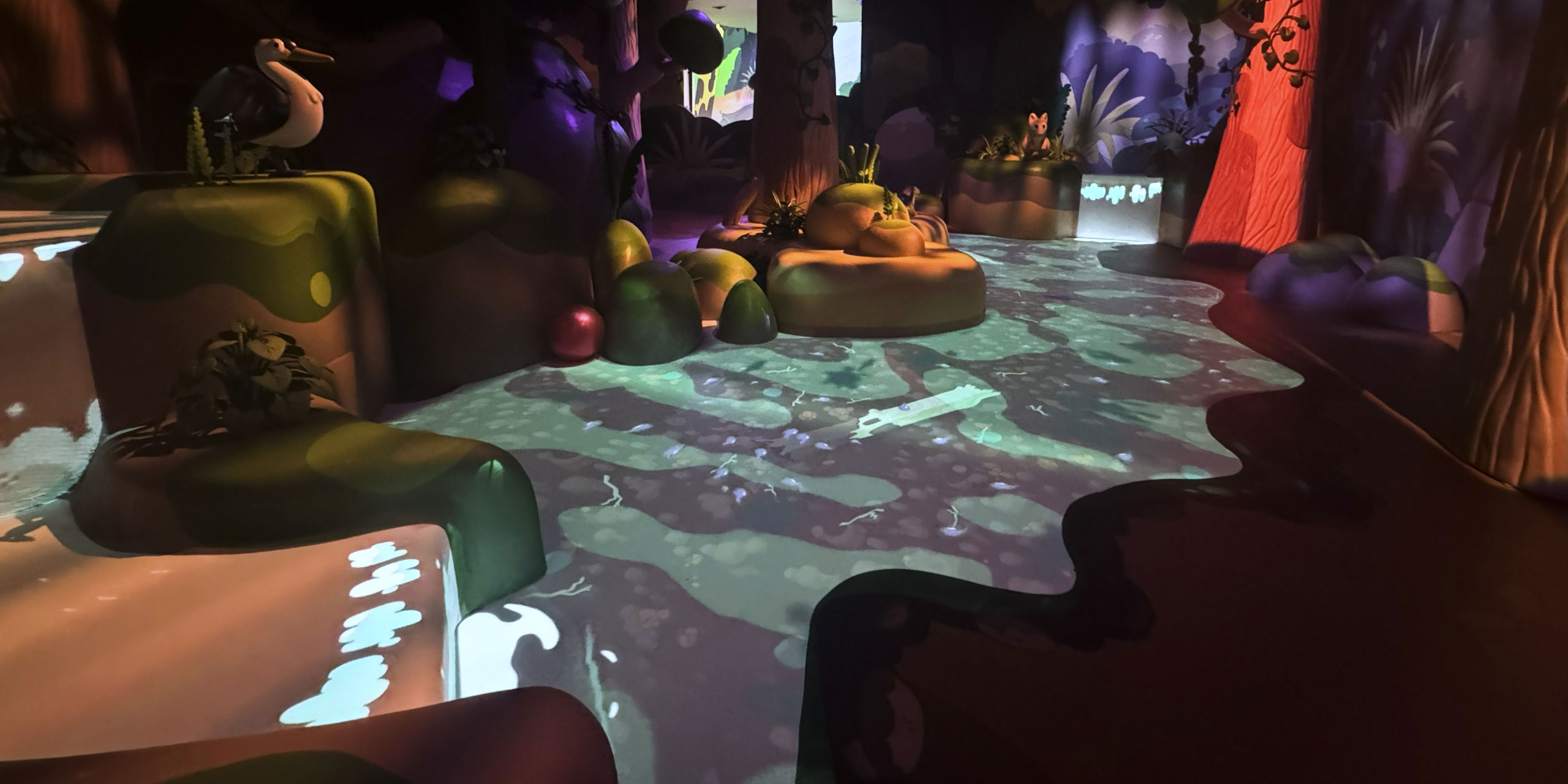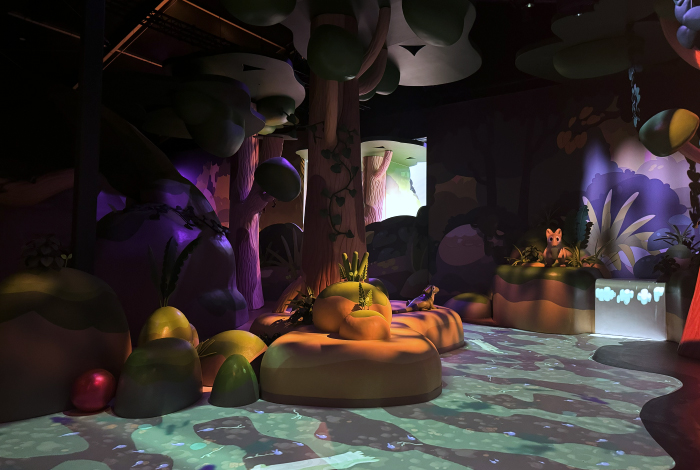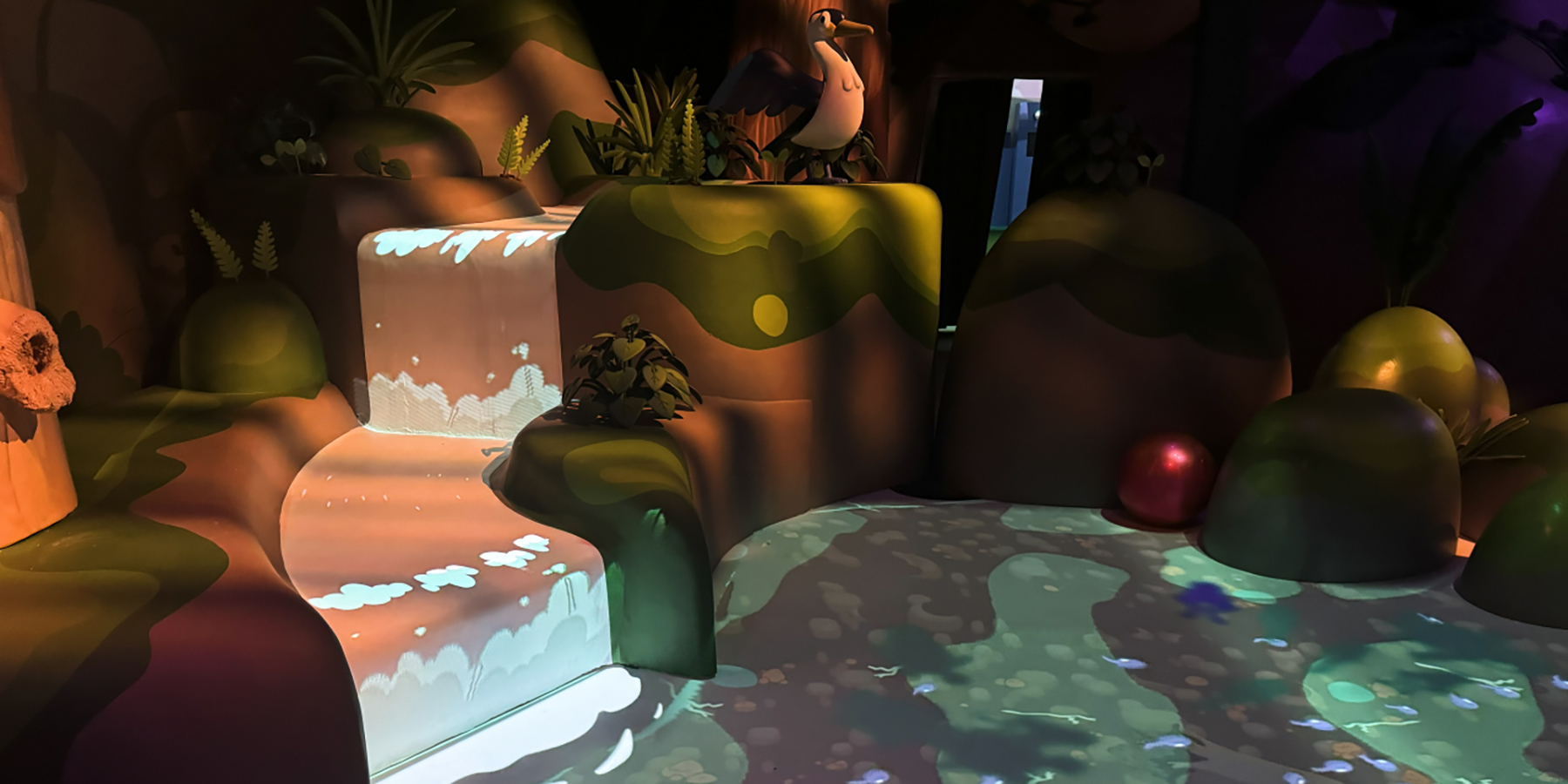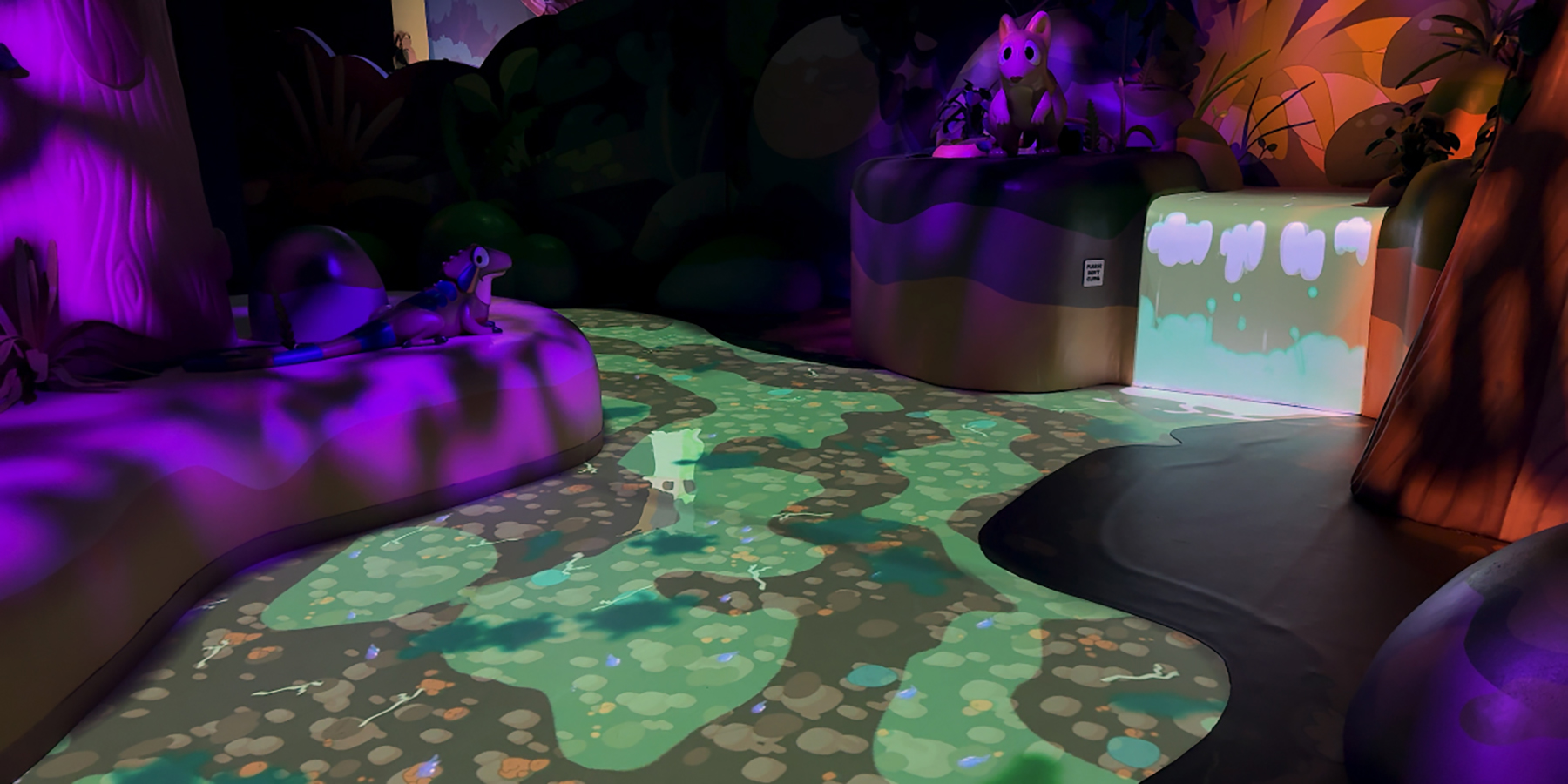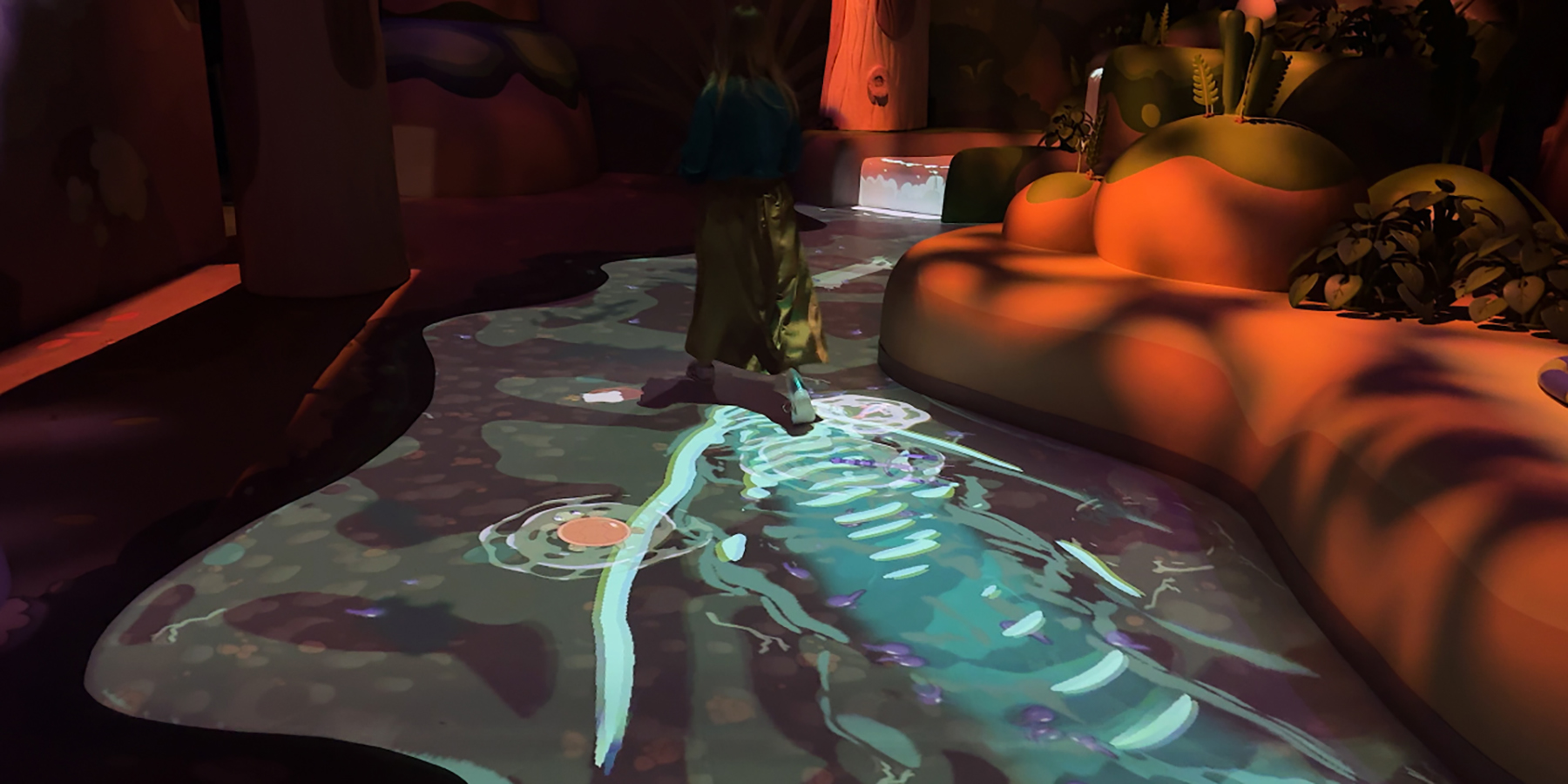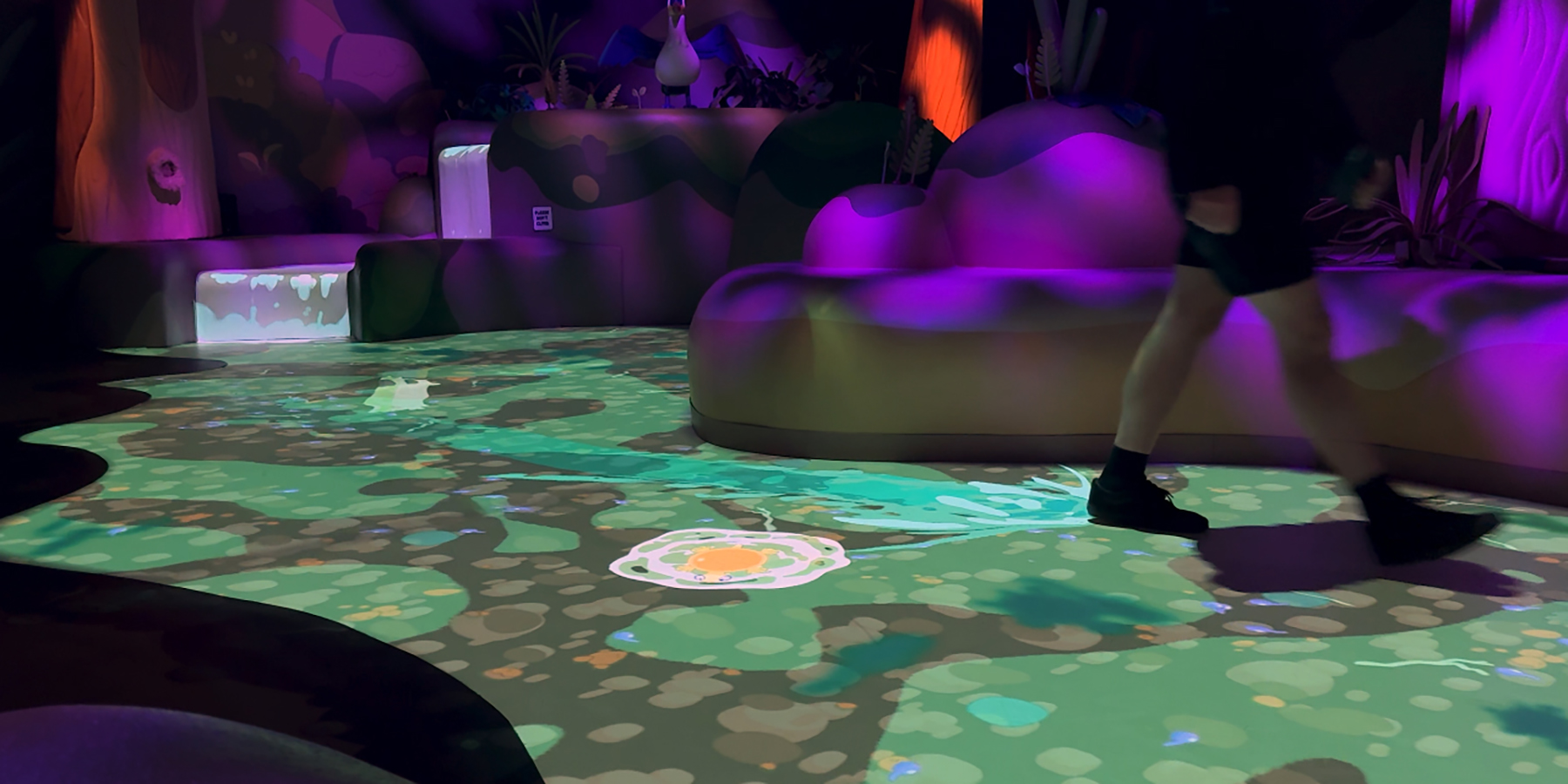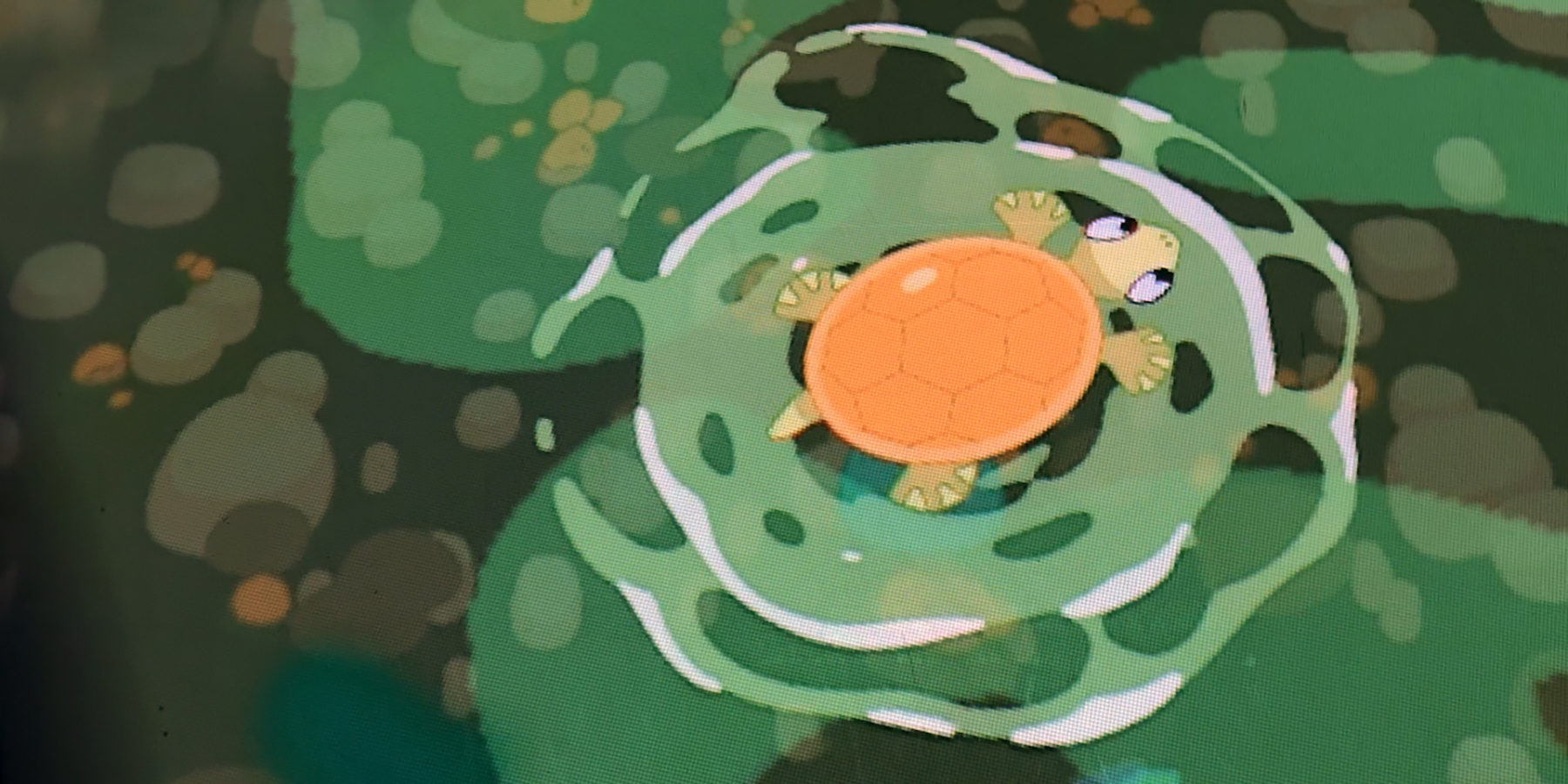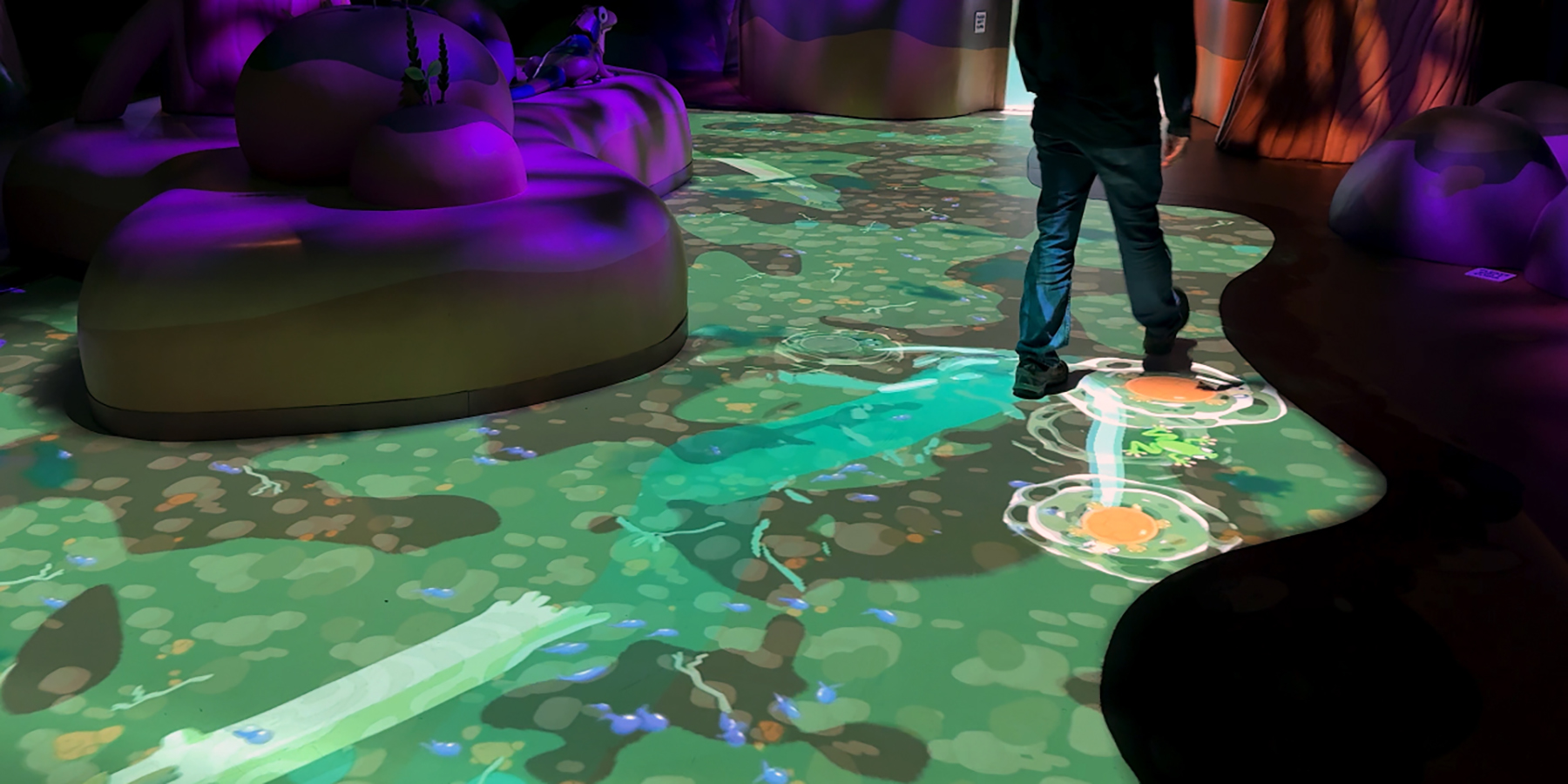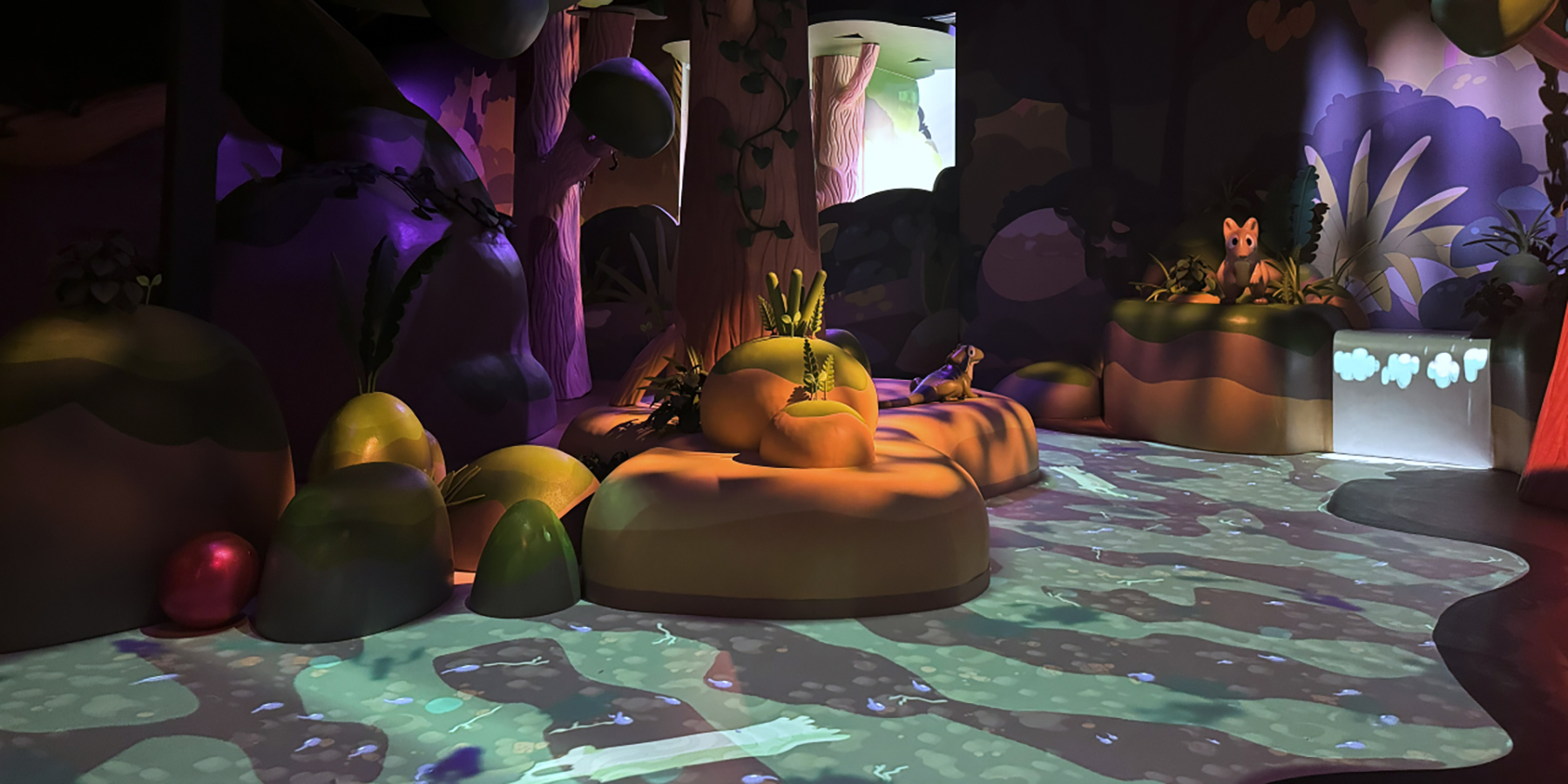The project began with a deep dive into the Bluey universe, particularly The Creek episode, to fully understand its tone, themes, and emotional resonance. I was immediately excited by the opportunity to bring my experience in immersive, real-time interactive design to a younger audience and to create a digital environment that felt intuitively playful and full of wonder.
Following my usual approach to interactive work, I began by developing user stories and a UX flowchart to map how the experience might unfold. Early on, the idea of a creature scavenger hunt stood out as a compelling game mechanic. This concept became the heart of a reverse brief and a working prototype, which I presented to stakeholders during the early development phase to help shape the creative direction.
Design and development took place over several months in Melbourne. I refined the UX and interaction system, tested motion sensors and technical integrations, and programmed the creative application using placeholder assets. Once the foundation was stable, we integrated bespoke animation and artwork supplied by Ludo Studio into the final build.
Throughout the process, I worked closely with Richard Dinnen at O2 Design and Management, whose creative oversight ensured the experience aligned with the broader narrative and spatial flow of Bluey’s World. We also collaborated at key stages with HVK World, Ludo Studio, and BBC Studios to ensure the digital elements stayed true to the Bluey brand and met the expectations of all stakeholders.
The final installation was commissioned onsite in Brisbane in October 2024. Set within a custom-built creek environment, it combined floor and wall projection mapping, ceiling-mounted motion sensors, audio, and responsive lighting. We thoroughly road-tested it with the crew, splashing around being chased by tadpoles, revealing creek creatures, making sure it worked and most importantly... was fun!

